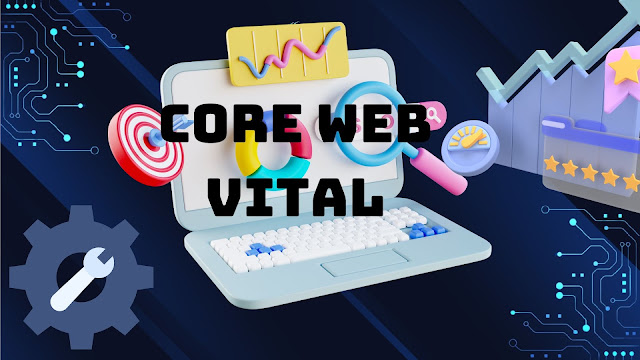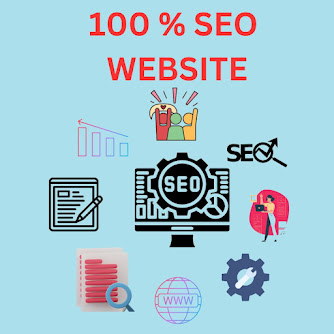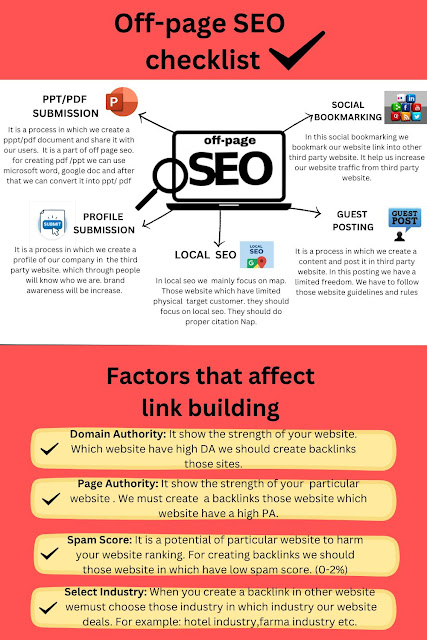Navigating the Digital Landscape: Understanding and Optimizing Core Web Vitals for a Seamless User Experience
Understanding and Optimizing Core Web Vitals for a Seamless User Experience
In today's digital age, where online presence is crucial for businesses and individuals alike, the performance of a website plays a pivotal role in determining its success. Users expect websites to load quickly and provide a smooth browsing experience across all devices. This expectation has led to the emergence of Core Web Vitals, a set of metrics introduced by Google to measure and optimize the user experience on the web. In this blog, we'll delve into what Core Web Vitals are, why they matter, and how you can optimize them to enhance your website's performance.
What is core web vital?
- Largest Contentful Paint (LCP): Largest Contentful Paint (LCP) measures the loading performance of a web page by assessing the time it takes for the largest content element to become visible to the user. This metric emphasizes the importance of delivering content quickly and efficiently, ensuring that users are engaged from the moment they land on a webpage. Let's explore LCP further with an example:
Example: Imagine you're browsing an online retail store in search of a new pair of shoes. You click on a product page and wait for it to load. If the image of the shoes is the largest element on the page and takes several seconds to appear, it results in a poor LCP score. In contrast, if the image loads almost instantly, providing you with a clear view of the product, it indicates a fast LCP and enhances your browsing experience.
1.Optimization Strategies for LCP:
- Optimize Images: Compress and resize images to reduce their file size without sacrificing quality. This helps in accelerating image loading times, thereby improving LCP.
- Prioritize Critical Resources: Ensure that essential resources such as images, CSS, and JavaScript required for rendering above-the-fold content are loaded first, speeding up the overall LCP.
- Utilize Lazy Loading: Implement lazy loading techniques to defer the loading of non-essential content below the fold, allowing critical content to load quickly and improve LCP.
- First Input Delay (FID):First Input Delay (FID) measures the responsiveness of a web page by quantifying the delay between a user's first interaction and the browser's response to that interaction. It evaluates how quickly a webpage becomes interactive and is crucial for providing a seamless browsing experience, particularly on interactive websites. Let's examine FID through a practical example:
Example: Consider you're visiting a news website to read an article. As you scroll down, you decide to share the article on social media by clicking the share button. If there's a noticeable delay between clicking the button and the browser responding to your action, it indicates a high FID. Conversely, if the webpage responds instantly to your click, it suggests a low FID, resulting in a smoother user experience.
3.Optimization Strategies for FID:
- Minimize JavaScript Execution Time: Identify and optimize long-running JavaScript tasks that may delay the responsiveness of the webpage, thereby reducing FID.
- Streamline Event Handlers: Use efficient event handling techniques such as event delegation and minimize the number of event listeners to improve responsiveness and lower FID.
- Implement Code Splitting: Divide large JavaScript bundles into smaller, more manageable chunks and load them selectively to reduce the initial load time and improve FID.
- Cumulative Layout Shift (CLS):
Cumulative Layout Shift (CLS) evaluates the visual stability of a web page by measuring the amount of unexpected layout shifts that occur during the page's loading process. It assesses how elements such as images, ads, or dynamic content affect the stability of the webpage layout. Let's illustrate CLS with an example:
Example: You're reading an article on a news website when suddenly, an advertisement loads at the top of the page, pushing the content down. This unexpected shift in layout disrupts your reading experience and indicates a high CLS. Conversely, if the webpage layout remains stable throughout the loading process, with no abrupt shifts in content placement, it suggests a low CLS and enhances user satisfaction.
4.Optimization Strategies for CLS:
- Set Explicit Dimensions for Media Elements: Specify width and height attributes for images, videos, and other media elements to allocate space and prevent layout shifts as they load.
- Reserve Space for Dynamically Loaded Content: Reserve space for ads, images, or other dynamic content by specifying placeholders or preloading elements to minimize unexpected layout shifts.
- Monitor Layout Changes: Utilize browser developer tools or performance monitoring tools to identify and address sources of layout instability, ensuring a visually stable browsing experience.
Why Core Web Vitals Matter:
Enhanced User Experience: Core Web Vitals focus on aspects of web performance that directly impact user experience. Metrics like Largest Contentful Paint (LCP), First Input Delay (FID), and Cumulative Layout Shift (CLS) measure loading speed, interactivity, and visual stability, respectively. By optimizing these metrics, website owners can create a seamless, enjoyable browsing experience for their visitors.
Search Engine Rankings: Google has explicitly stated that Core Web Vitals will become ranking factors in search results. Websites that offer superior user experiences, as indicated by optimal Core Web Vitals scores, are more likely to rank higher in search engine results pages (SERPs). Therefore, prioritizing Core Web Vitals optimization is crucial for maintaining or improving search visibility and organic traffic.
Business Impact: User experience directly influences key performance indicators (KPIs) such as bounce rates, conversion rates, and user retention. Websites that provide a fast, responsive, and visually stable experience are more likely to keep visitors engaged, encourage conversions, and foster customer loyalty. Consequently, optimizing Core Web Vitals can lead to tangible business benefits, including increased sales, leads, and revenue.
Optimization Strategies:
Improve Largest Contentful Paint (LCP): LCP measures the loading performance of a web page. To optimize LCP:
- Optimize Images: Compress and resize images to reduce their file size without compromising quality.
- Prioritize Content Loading: Load critical resources first and defer non-essential scripts to ensure faster rendering of above-the-fold content.
- Upgrade Hosting: Use a reliable hosting provider or content delivery network (CDN) to minimize server response times.
Enhance First Input Delay (FID): FID quantifies the responsiveness of a web page. To optimize FID:
- Minimize JavaScript Execution: Identify and optimize long-running JavaScript tasks to reduce execution time.
- Streamline Event Handlers: Use efficient event handling techniques and minimize the number of event listeners to improve responsiveness.
- Implement Code Splitting: Divide large JavaScript bundles into smaller chunks and load them selectively to reduce the initial load time.
Minimize Cumulative Layout Shift (CLS): CLS evaluates the visual stability of a web page. To optimize CLS:
- Set Explicit Dimensions: Specify width and height attributes for images, videos, and other media elements to prevent layout shifts.
- Reserve Space for Dynamically Loaded Content: Reserve space for ads, images, or dynamic content to minimize unexpected layout shifts.
- Monitor Layout Changes: Use browser developer tools or performance monitoring tools to identify and address sources of layout instability.
In conclusion, Core Web Vitals represent a significant advancement in the realm of web performance optimization. By focusing on metrics that directly impact user experience, such as Largest Contentful Paint (LCP), First Input Delay (FID), and Cumulative Layout Shift (CLS), website owners have the opportunity to create engaging, efficient, and visually appealing online experiences for their visitors.
The importance of Core Web Vitals cannot be overstated. These metrics not only serve as key indicators of a website's performance but also influence its search engine rankings and overall success. Prioritizing Core Web Vitals optimization isn't just about meeting Google's standards; it's about exceeding user expectations and delivering experiences that resonate with visitors.
To optimize Core Web Vitals, website owners can implement a variety of strategies tailored to improve loading speed, responsiveness, and visual stability. Whether it's optimizing images, minimizing JavaScript execution time, or monitoring layout changes, every effort made toward enhancing Core Web Vitals contributes to a better overall user experience.
In today's competitive digital landscape, where user satisfaction is paramount, embracing Core Web Vitals as a guiding principle is essential for success. By aligning with these user-centric metrics, website owners can not only improve their search engine visibility but also foster long-term engagement, loyalty, and growth in an ever-evolving online environment.



Comments
Post a Comment